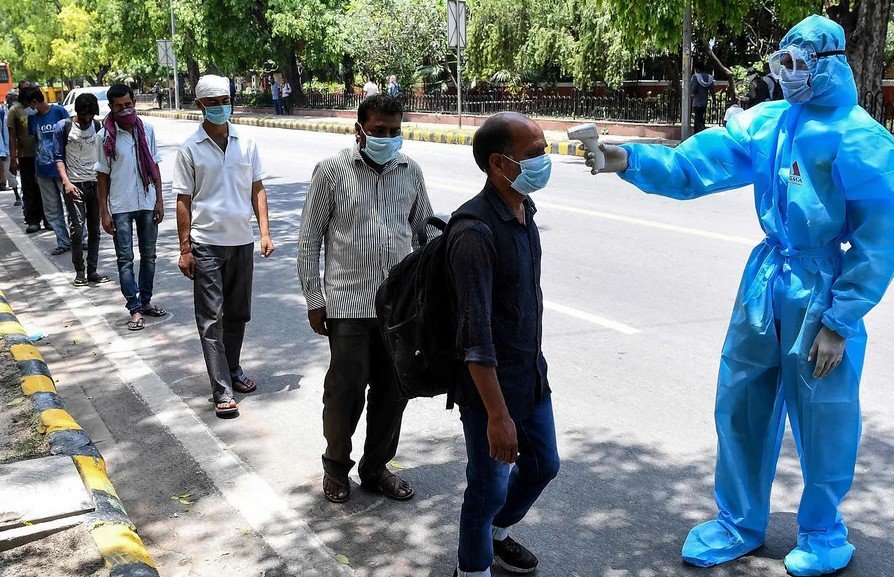Cases Climb in Several States, But Most Infections Remain Mild; Experts Say There’s No Need for Panic
India’s Covid-19 numbers are nudging upwards again. Not dramatically — not like the dark days of 2020 or 2021 — but enough to grab attention. And while the graphs might stir unease, experts are urging level-headedness, not alarm.
Soumya Swaminathan, former Chief Scientist at the World Health Organization (WHO), says there’s no need to fear another catastrophic wave. “This is not 2021,” she said. “This is a very different stage of the pandemic.” But still, a bit of common sense? Goes a long way.
The Numbers Are Rising, But So Is Recovery
Over the past week, health officials have seen a gradual uptick in Covid-19 cases across the country. The total number of active cases now sits just below 4,000.
West Bengal logged 82 new infections — the highest single-day figure — followed closely by Kerala and Delhi. Kerala, in fact, is carrying the bulk of the country’s current active load with 1,400 cases.
That said, the vast majority of these infections aren’t ending up in ICUs. In fact, most aren’t even leading to hospital visits.
Just 28 deaths have been reported across the nation since January 1. Seven each in Kerala and Maharashtra. The rest scattered sparsely across states. The numbers are real — but they’re far from panic-worthy.

Omicron’s JN.1 Variant Is Behind Most New Cases
The main culprit behind this latest wave? The JN.1 subvariant of Omicron. It’s not new — and it’s not behaving wildly.
“It’s a mild strain,” Swaminathan explained. “The virus has been around five years now. It’s still mutating — just like flu does. But so far, we’re not seeing any major shifts toward severe disease.”
She pointed out that most people showing symptoms are recovering at home without much medical intervention. The Indian Council of Medical Research (ICMR) confirmed that hospitalization rates remain low.
So what’s driving this rise, then? Well, experts say it could be a mix of factors — waning immunity, colder temperatures in some parts of India, and perhaps a new round of social gatherings. Still, for most healthy individuals, the virus is behaving more like a seasonal cold.
Government and Local Officials Urge Basic Precautions
While there’s no nationwide alarm bell ringing, states like Andhra Pradesh are taking a cautious approach.
On June 1, state minister K Parthasarthi made a public appeal. He advised people to:
-
Avoid large gatherings
-
Wear masks in crowded spaces
-
Protect elderly and pregnant individuals by limiting their exposure
-
Ensure health facilities are well-stocked with PPE kits
His tone wasn’t panicked — just firm. “We’re not locking things down again,” he said. “But let’s use our heads.”
In many ways, this feels like India’s new Covid rhythm: flare-ups, followed by local advisories, followed by a quiet return to normal. No major headlines, no empty streets — just people adjusting to life with a virus that refuses to fully exit stage left.
A Look at the State-Wise Case Breakdown
Here’s a quick overview of current case numbers by state, as of June 1, 2025:
| State | New Cases | Active Cases | Deaths in 2025 |
|---|---|---|---|
| Kerala | 64 | 1,400 | 7 |
| West Bengal | 82 | 610 | 3 |
| Delhi | 61 | 570 | 2 |
| Maharashtra | 45 | 500 | 7 |
| Andhra Pradesh | 30 | 330 | 1 |
| Others | 81 | 551 | 8 |
| Total | 363 | 3,961 | 28 |
These numbers show a slow but noticeable spread. Still, there’s no suggestion that it’s spiraling out of control.
Swaminathan Recommends Flu Shots for the Vulnerable
Interestingly, Swaminathan spent a fair chunk of her recent interview talking about something else entirely: influenza.
“Flu kills a lot more people than Covid does now — in India and globally,” she said. “It makes complete sense for older people and those with comorbidities to take the flu vaccine. It gets updated annually, and it can save lives.”
She wasn’t just making a public health pitch — she was laying out a realistic risk comparison. The scary headlines might still go to Covid, but the real danger for many people might be the flu lurking quietly in the background.
And flu season, like clockwork, isn’t far off.
Public Complacency Is the Real Threat, Say Experts
For all the science, data, and charts, the real concern among healthcare workers isn’t the virus itself — it’s how casually people are treating it.
Masks have vanished in public spaces. Sanitizers are back to gathering dust. And few people think twice before heading into packed concerts or weddings.
“Nobody’s saying you need to shut yourself indoors,” one Delhi-based epidemiologist told us off the record. “But if you’re sneezing, stay home. If you’re high-risk, mask up. And don’t assume that just because hospitals aren’t full, everything’s fine.”
India learned its Covid lessons the hard way. But with each passing month, memories fade. The challenge now is keeping the country alert — without sounding the doomsday bells.
